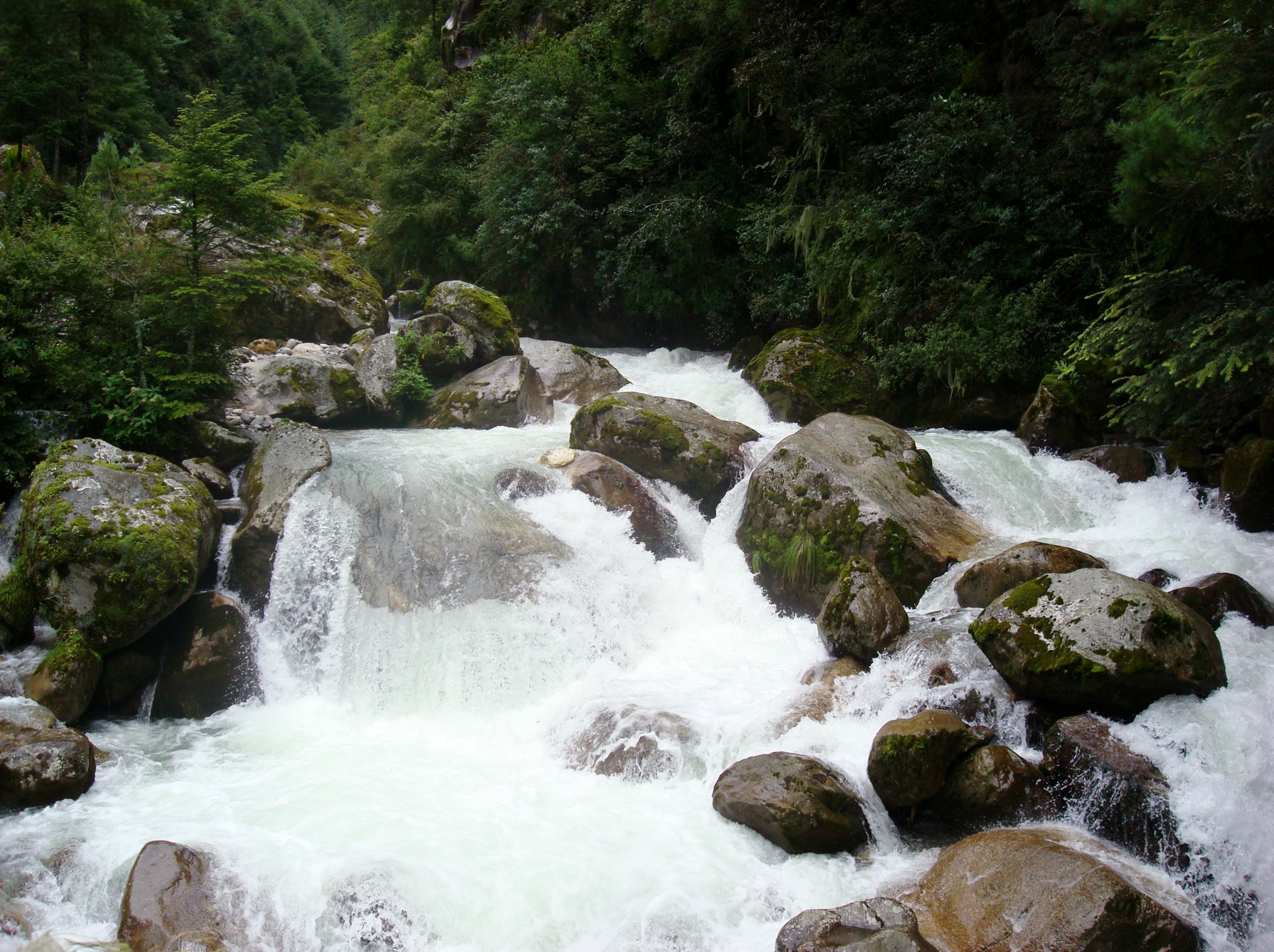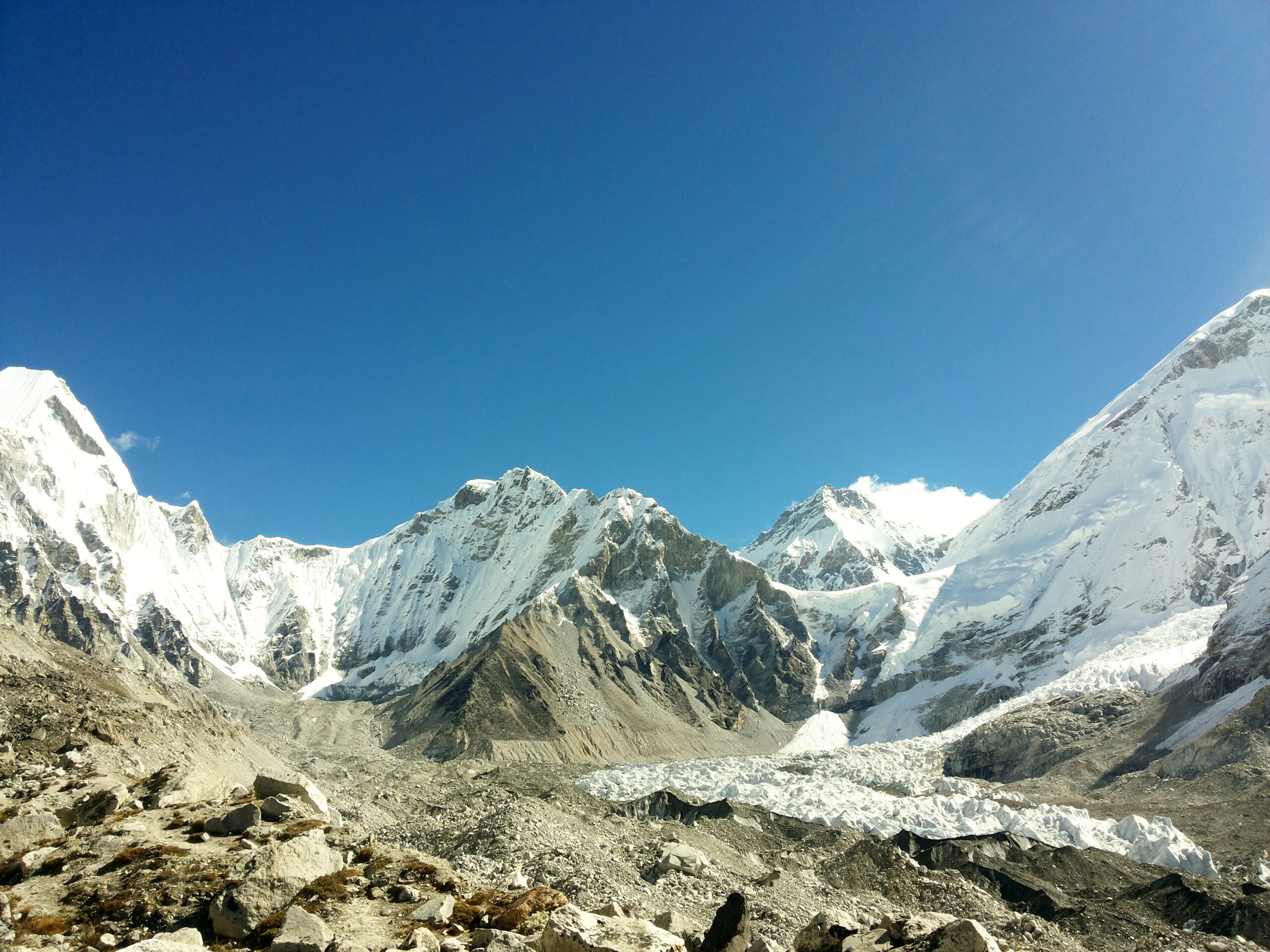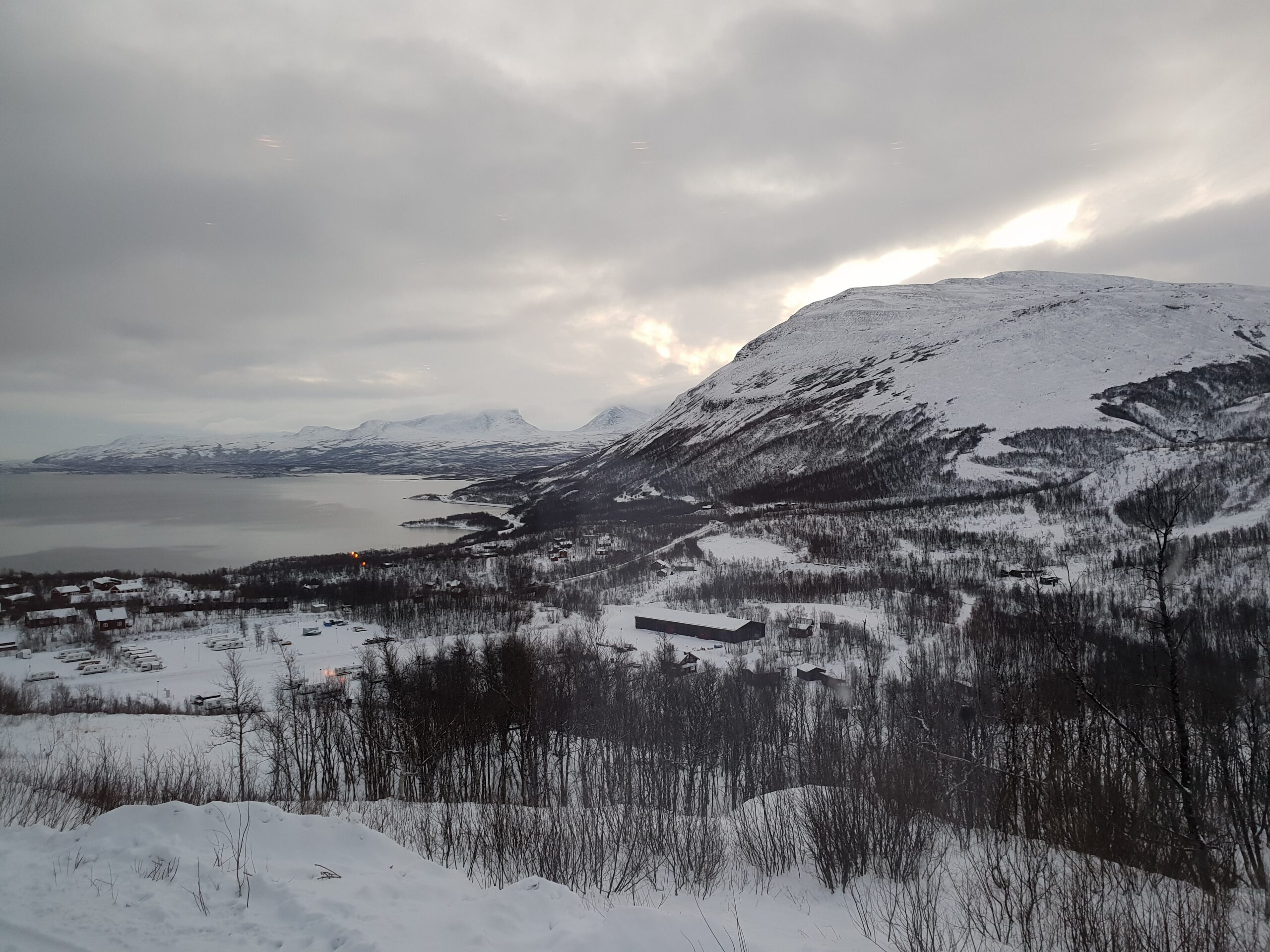It was the third day of our trek and my friends who had done Everest base camp trek in the past had told me the trek from Phakding to Namche Bazaar was going to be a long and tough day of trekking and was the first test of strength and stamina. The sky was overcast and the ground was wet from the rains of the previous night. We were told that on a clear day, we would get the first glimpse of Mt. Everest on this trail and were looking forward to it. After a good breakfast of pancakes and honey, I was all set for a long day of ascents and descends. We decided to start early and were all set to begin our trek by 8 am in the morning.
Phakding is a small village in the Khumbu region of Nepal and lies in the river valley of the Dudh Kosi river. The village sustains itself largely through tourism and tea houses run for trekkers. In comparison, Namche Bazaar was a much larger village and the hub for trekkers on their Himalayan climbs.
As we started out towards Namche, the trail was a slow ascent and it was easy considering our energy and excitement. But, we all knew it was going to be a long day and were very careful conserving energy and respecting the altitude. The trek for most part was going to be along the Dudh kosi river. Dudh Kosi in Nepalese means river of milk and it drains the entire eastern Nepal region. It is also called as Sapt Kosi as seven rivers join together to form the Kosi river system. It starts east of the Gokya Lakes and flows to Namche and further down to Lukla.
The scenery on the trail was beautiful. The mani walls and stupas added to the beauty of the trail. We were forewarned about the trail being dusty but were lucky for the post monsoon showers had settled the dust. Along the way, there was an occasional drizzle but the sun was out and it was a bright morning for most part.
We stopped at a small tea house in Benker for tea and snacks; Benkar is a small village at an altitude of 2900 m. After a short break of 20 minutes, we proceeded towards Jorsale; enroute we would enter the Sagarmatha National park.
The Sagarmatha National Park is a protected area of about 443 sq mi in the Solukhumbu District of eastern Nepal and is home to Mt. Everest (8848 m). It was established in 1976 as Nepal’s first national park and is a natural World Heritage Site with elevation spanning from 2800 m to 8848 m. Over 70% of the park area is barren land with elevation of over 5000 m; the terrain is rugged and steep and has deep rivers and glaciers.
We were finally at the entrance to the Sagarmatha National Park, there was a brightly painted arch welcoming us. We could see scores of trekkers in the area. We had to get our passes stamped before we proceeded further. As our guides Nima and Minmar went about getting the formalities completed, we were busy taking pictures! Nima our main guide, aged 23, had done 24 trips to Everest base camp! His assistant guide was his father Minmar who had summited Everest and several other peaks in Nepal.

Once the formalities were complete, we started our trek again. This time we had to descend a long series of stone steps. We met several trekkers who were returning from treks struggling up. We offered a word of encouragement stating they were almost there and continued down. We were wondering what the next several days had in store for us; we could see weariness in the faces of most returning trekkers.
We were finally in a small village called Jorsale, which was going to be our lunch halt. Jorsale at an altitude of 2740 m is again a village that largely has tea houses to support trekkers in the region. We were one of the first groups to arrive at the tea house for lunch. As we were very careful about what we ate, it was going to be a meal of garlic soup and Dal Bhat for lunch, which is freshly prepared in most tea houses. People drink a lot of milk tea in Nepal and we got used to the idea of drinking milk tea as we waited for lunch. The tea houses are mostly made of wood with glass windows and tables along the walls. There is a small stove in the center to provide some heat and is mostly operated in the evening.
As we continued on our trail post lunch, we crossed another suspension bridge; we had already crossed 4 bridges since morning, most of which are across the Dudh Kosi river. This one was important as it is the highest suspension bridge across the Dudh Kosi river on the Everest base camp trek. There is a lower bridge too but is not used anymore.
We continued on our trail, we could see streams and the vegetation changed to pine trees as we continued up. It was a lot cooler despite the sun and we were on an ascent for most part. We were getting tired and hoping we would reach Namche soon. I could see that our group of 5 was getting split as some people were falling behind. The guides ensured there was one person at the front and another at the rear. One person is our group was ahead. There were two of us who were pacing ourselves well and were walking together and there were another two who were at the rear end. It was tiring and I knew I could not stop, it was important to keep the momentum and keep walking at a comfortable speed, taking in deep breaths and sipping some water to keep oneself hydrated. We kept ascending for most part of the trail post lunch with some descents. The trail offered us our first view of the snow capped Himalayan peaks – we could see Thamserku (6623 m) to our right as we climbed up.
We finally reached another check post just outside Namche Bazaar and waited for the other 2 from our group and our guide Minmar to join. It was about 3 pm in the afternoon and it was going to take another 30 minutes of climbing up to reach out hotel in Namche Bazaar. This was a good time to snack on our supply of energy bars; we were hungry and tired and the energy bars were a huge help. After a 20 minute wait, the last 2 from our group arrived. We rested a little longer, showed our passes at the check post and proceeded further. We had to do the final ascent to Namche Bazaar, it was going to be a steep climb again. After about half an hour, we were walking past village houses and shops and were in Namche finally. We did need to climb up a long flight of stone steps to reach our hotel Camp Davis which was going to be our night halt for 2 nights.
Namche Bazaar is a small town in the Solukhumbhu region of eastern Nepal at an altitude of 3440 m and is a trading center and tourist hub for the Khumbhu region. The economy runs on trekkers visiting the Himalayan region. One can find shops selling all kinds of trekking and climbing equipment, medicines, apparel and other items needed for a trek. There are several internet cafes, coffee shops and bakeries. This is the largest town in the region and used by trekkers for altitude acclimatization. The peak season is in the months of March to May when climbers summit Mt. Everest. In September, a large number of bakeries and shops were closed as it was lean season just post the monsoons. We were sad that we could not try the freshly baked pastries at the renowned German Bakery.
On reaching our hotel, we got to know that there had been a power outage for the last couple of days and we could have challenges with water in the bathrooms. As we were discussing the options, power was restored. The hotel rooms were very nice with clean beds and a very clean bathroom. We quickly checked in, dumped our bags, changed into our open sandals and gathered at the dining area for tea. We were thrilled that all of us were in good health and no one had any signs of altitude sickness. It was interesting to see several boards on our trail warning us of the symptoms of altitude sickness and how it can kill if ignored.
The dining area was made of wood with several wooden tables and chairs. The walls were adorned with autographed posters of Reinhold Messner and other renowned climbers. Several groups of trekkers and climbers had left notes about their treks including pictures and posters. The other tables were occupied by trekking groups as well. You could hear discussions on trails, weather, altitude and so on and there was a sense of belonging even though we didn’t know each other; a nod, a smile, a remark, it was all about having a common goal and getting there.
After resting for almost an hour, some of us decided to walk down and explore Namche Bazaar and its shops. Three of us checked out shops that had all kinds of trekking gear. Couple of my friends wanted to pick up a down jacket; one could find all the global brands in the shops, though most of it is not original. Darkness descends very quickly and we found we had not carried our head lamps or torches. But, we could make our way back to Camp Davis. After a hearty dinner, it was time to call it a night. It had started raining and was very cold. I was back in my room, zipped up inside my sleeping bag for a night of much needed rest and sound sleep. The next day was a rest day; acclimatization day to be precise and we were to trek up to Everest View Hotel for a first glimpse of Mt. Everest.













Leave a Reply